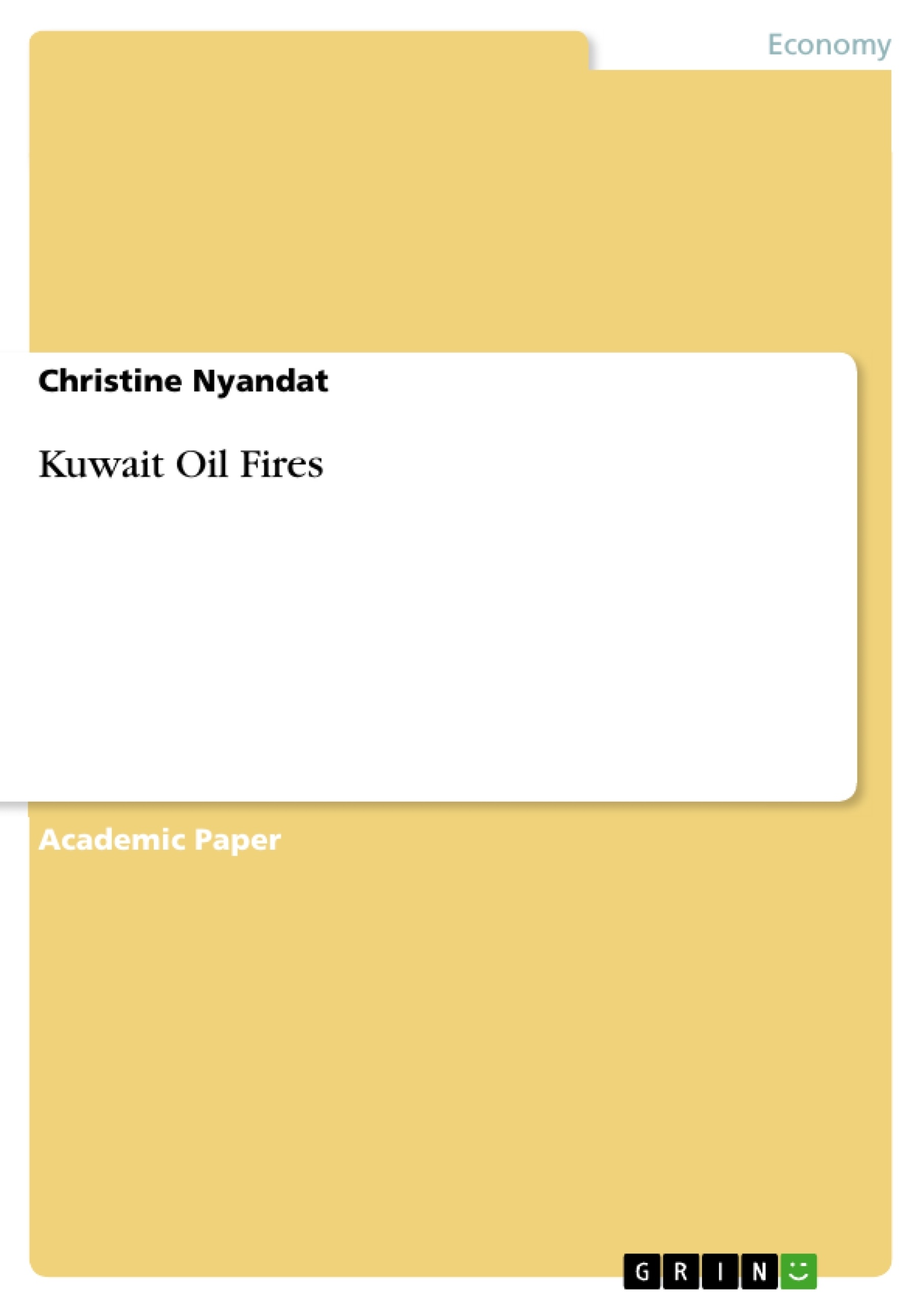Oil well flames allude to gas or oil wells that are consuming. Oil well flames can happen because of human activities, for example, illegal conflagration or mishaps, or regular occasions, for example, lightning. These flames cause ecological impacts and discharge lethal contaminations into the air, which result in wellbeing related issues. In this way, the Oil Flames were brought about by the Iraqi Military Powers, setting a flame to 605 to 732 Oil Wells. The flames were made in January and February 1991, and the principal Well flames were quenched in April 1991 and the keep going one on November 6, 1991. S There was a conflict amongst Iraq and Kuwait over some boring in oil. However, Kuwait was delivering oil over the cutoff points by the Association of the Oil Exporting Nations or only (OPEC) for short.
Oil well flames allude to gas or oil wells that are consuming. Oil well flames can happen because of human activities, for example, illegal conflagration or mishaps, or regular occasions, for example, lightning. These flames cause ecological impacts and discharge lethal contaminations into the air, which result in wellbeing related issues. In this way, the Oil Flames were brought about by the Iraqi Military Powers, setting a flame to 605 to 732 Oil Wells. The flames were made in January and February 1991, and the principal Well flames were quenched in April 1991 and the keep going one on November 6, 1991. S There was a conflict amongst Iraq and Kuwait over some boring in oil. However, Kuwait was delivering oil over the cutoff points by the Association of the Oil Exporting Nations or only (OPEC) for short.
At the point when the Iraqi intrusion was going on, Kuwait had quotas averagely 1.9 million barrels for each day, which accompanied the sharp drop in the cost of oil. By 1990 The overproduction was an ultimate purpose of conflict with Iraq. The U.S. was at that point envisioning the intrusion of Iraq - involved Kuwait, the Iraqi system chose to demolish; however, much of Kuwait's oil holds as could be expected. In December 1990, Iraqi powers put a few charges on the oil wells. What's more, they were disrupted by January 16, 1991. Satellite pictures identified the primary smoke from consuming oil wells. The number of oil flames topped between February 22 and 24. They figured out how to set fire or harm more than 700 oil wells, treatment facilities, offices, and capacity tanks in Kuwait. And after that, an extra 34 wells were demolished by substantial alliance bombarding. As so there had been 610 flames, out of 749 offices harmed or ablaze alongside oil lakes and fire channels.
It obliterated 85% of the wells in each main Kuwaiti oil field. The endeavors to bring the flames and other harm leveled out started in April 1991. After seven months, 441 amenities were leveled out, and 308 were most certainly not. The keep was going one completed on November 6, 1991. What's more, the aggregate sum consumed is more than 1 billion barrels of the whole 104 billion supply. Just about one in every 100 barrels were decimated until the end of time. What's more, the day by day worldwide oil utilization in 2015 is 91.4 barrels, and the oil lost to ignition would most recent 11 days at present-day use rates. The flames were so terrible it was said to cause "Atomic winter" with a haze of smoke covering a large portion of the Northern Side of the equator, following 100 days ignored and the cloud the temperatures were decreased to 5-10 Celsius (Bell, 2017). Indeed, even following ten years, Kuwaiti was all the while recouping from the debacle, managing the mists.
The Gulf was recuperating from the Iran- Iraq war damages. In 1990 when the crisis started, less focus was paid to the likely impacts of sustained combat on the environment in the region (Mukhopadhyay et al., 2017). Afterward, environmentalists and researchers started considering the possible effects that could affect the outcome. The Kuwait oil fire in 1992 was reported to impact the Persian Gulf massively. The flames from the oil well triggered 3,400 metric tons of grime daily together with smoke. The discharged smoke in the atmosphere comprised a blend of gasses like carbon monoxide, sulfur oxide, nitrogen oxide, and acidic aerosols. These gasses deplete the ozone layer and trigger a rise in Kuwait temperatures and cause acid rain, which triggers the ecosystem destruction. This has prompted harsh droughts in Kuwait and therefore a reduction in plant population.
After the crisis, most parts of the Kuwait desert was inhabitable due to massive soot accumulation and oil lakes from the scorching wells. The dominant regional northern winds ensured that the nation expended most of the fire’s implications. Also, there was uneven sea heating and land surfaces which caused raised atmospheric inversions amid summer. Smoke got entangled in the lower atmosphere and triggered plumes to conceal the land surface. Likewise, violent sandstorms occurred, which were triggered by powerful summer winds.
The gulf oil spillage also perniciously impacted the fishing industry. The oil spillage interrupted the fish and shrimp spawning. It likewise affected other species lives like green turtles and hawksbill, whales, dolphins, sea snakes, migrating birds like cormorants and flamingos and dugongs. Studies indicate that the indigenous cormorants of the gulf region died because exposure polluted oil and air (Issa & Vempatti, 2018). The amount of harvest reduced considerably. The freshwater supply from the country was likewise threatened, and several desalination plants were adversely affected.
The environmental outcomes of the oil fires were emergency influenced the land, air, and water. The discharge of unsafe gasses created smoke crest and sediment that contaminated the nation. The oil fire likewise promoted oil flow into the Persian Bay, covering over 440 miles of its coastline. This compromised aquatic life.
[...]
- Citation du texte
- Christine Nyandat (Auteur), 2020, Kuwait Oil Fires, Munich, GRIN Verlag, https://www.grin.com/document/922965




